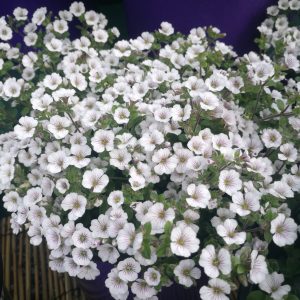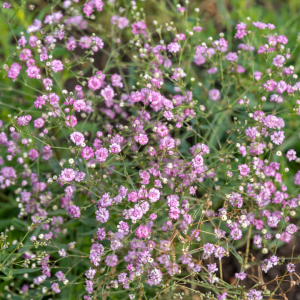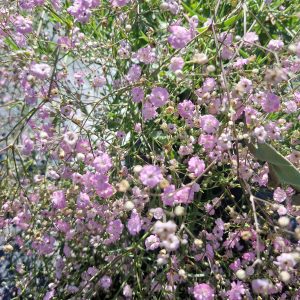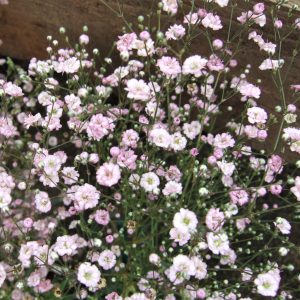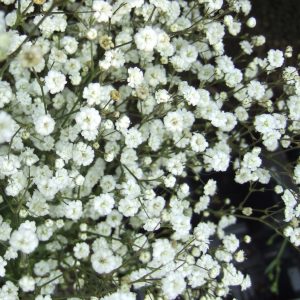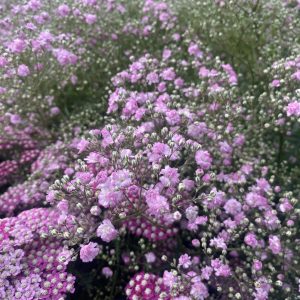Gypsophila, commonly known as Baby’s Breath, is a delicate and airy perennial that adds charm and elegance to gardens. Follow this comprehensive planting guide to ensure successful establishment and abundant blooms for your Gypsophila plants:
Site Selection
Sunlight Requirements: Plant Gypsophila in full sun for optimal blooming. Ensure the chosen location receives at least 6 hours of direct sunlight daily.
Soil Conditions: Gypsophila thrives in well-draining, alkaline to slightly acidic soil. Improve soil drainage by adding sand or perlite if necessary.
Planting Time
Spring or Autumn: Plant Gypsophila in the spring or autumn when the soil is workable. Avoid planting during extreme heat or cold.
Planting Process
Spacing: Space Gypsophila plants about 12 to 18 inches apart, providing adequate room for their mature size.
Container Planting: Gypsophila adapts well to containers. Use a well-draining potting mix and choose containers with drainage holes.
Planting Depth: Plant Gypsophila at the same depth as they were in the nursery container. Water thoroughly after planting.
Watering
Establishment Period: Water Gypsophila regularly during the first few weeks after planting to help them establish. Once established, they are moderately drought-tolerant.
Deep Watering: Water deeply when the top inch of soil feels dry, especially during dry spells.
Mulching
Mulch Application: Apply a layer of organic mulch around the base of Gypsophila plants to conserve moisture, suppress weeds, and regulate soil temperature. Maintain a 2-3 inch layer and refresh as needed.
Fertilisation
Minimal Fertilisation: Gypsophila typically doesn’t require heavy fertilisation. Use a balanced fertiliser in the spring and avoid over-fertilising to prevent excessive foliage growth.
Support
Staking: Gypsophila has a naturally airy habit and usually doesn’t require staking. However, tall varieties may benefit from support in windy locations.
Pruning
Deadheading: Regularly deadhead spent flowers to encourage continuous blooming and prevent self-seeding.
Pest and Disease Management
Pest Resistance: Gypsophila is generally resistant to pests. Monitor for aphids or leaf spot, and treat promptly if detected.
Good Air Circulation: Ensure good air circulation by spacing plants appropriately to minimise the risk of fungal diseases.
Winter Care
Minimal Winter Care: Gypsophila is hardy in most regions and requires minimal winter care. Consider applying a layer of mulch in late autumn to protect the plant’s roots.
Monitoring and Adjustment
Visual Inspection: Regularly inspect Gypsophila plants for signs of stress, pests, or diseases. Adjust watering and care practices based on your observations.
Division
Every Few Years: Consider dividing Gypsophila every few years to rejuvenate the plant and maintain its vigour. Division is best done in early spring or autumn.
Enjoy the Blooms
Blooming Season: Gypsophila typically blooms from late spring to early summer. Revel in the delicate, cloud-like blooms that enhance the beauty of your garden.
By following this planting guide, you’ll create an optimal environment for your Gypsophila plants to thrive. Customise care based on your local conditions and the specific requirements of the Gypsophila variety you have chosen.



